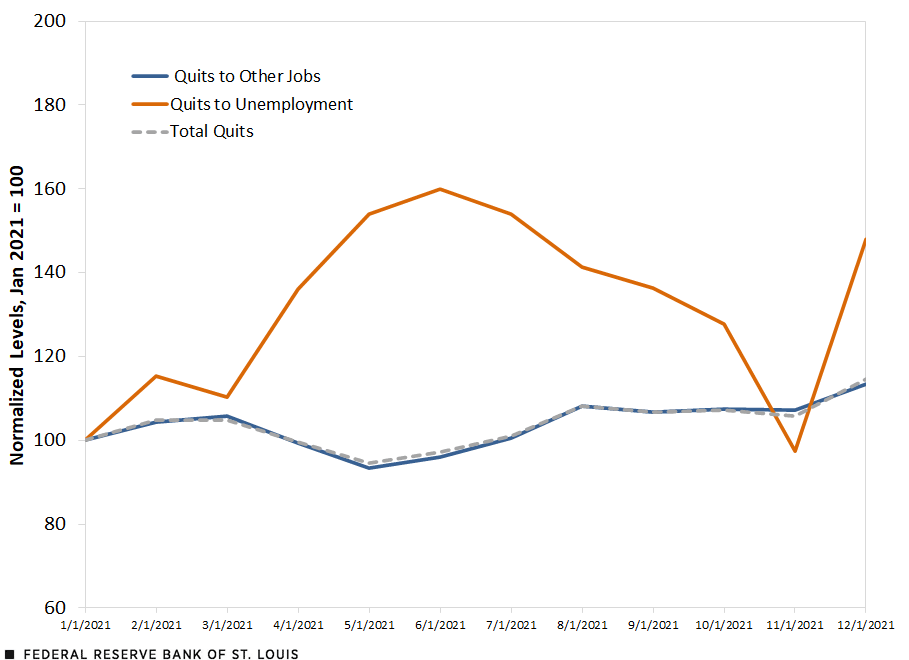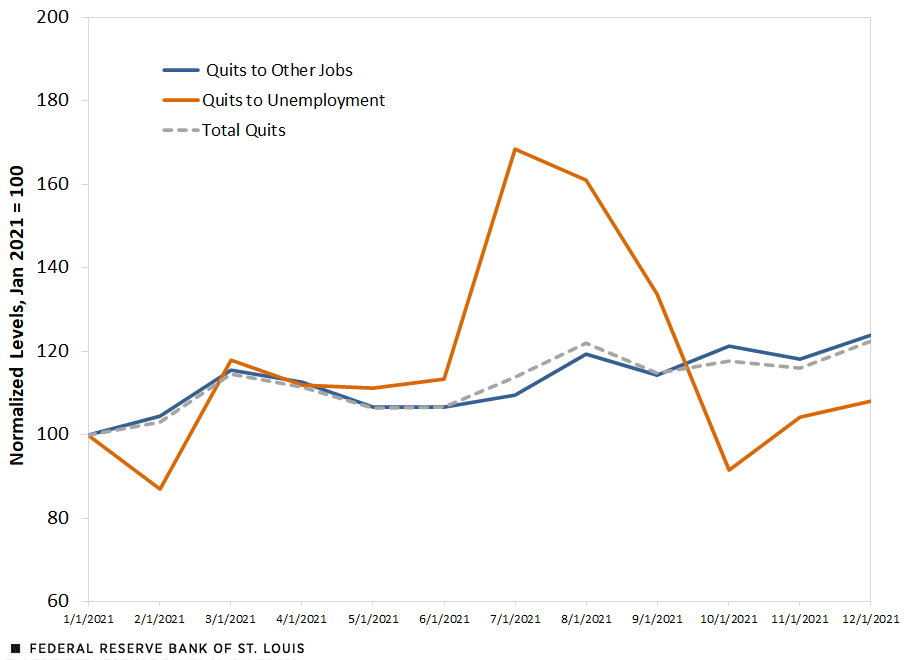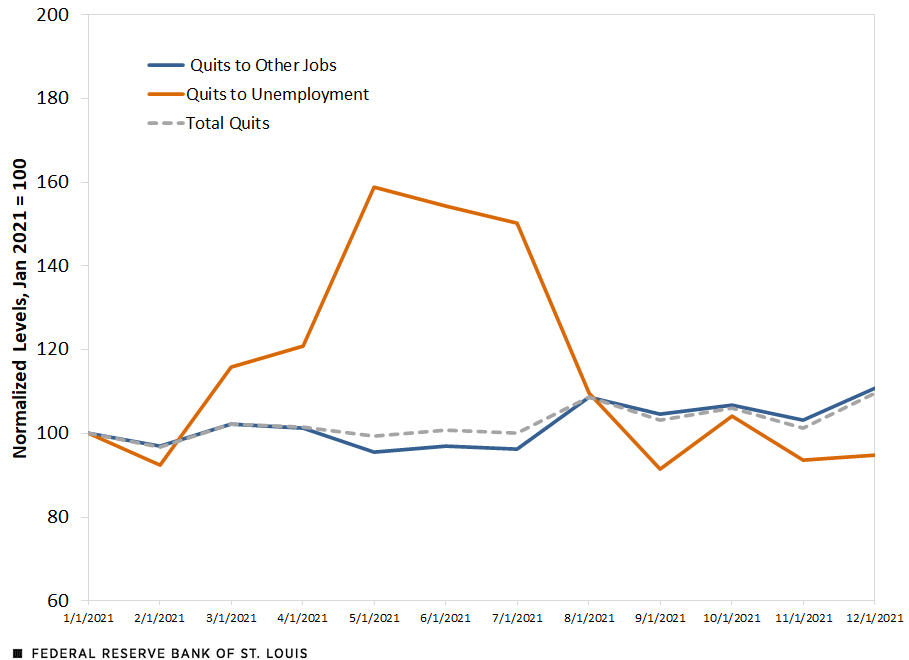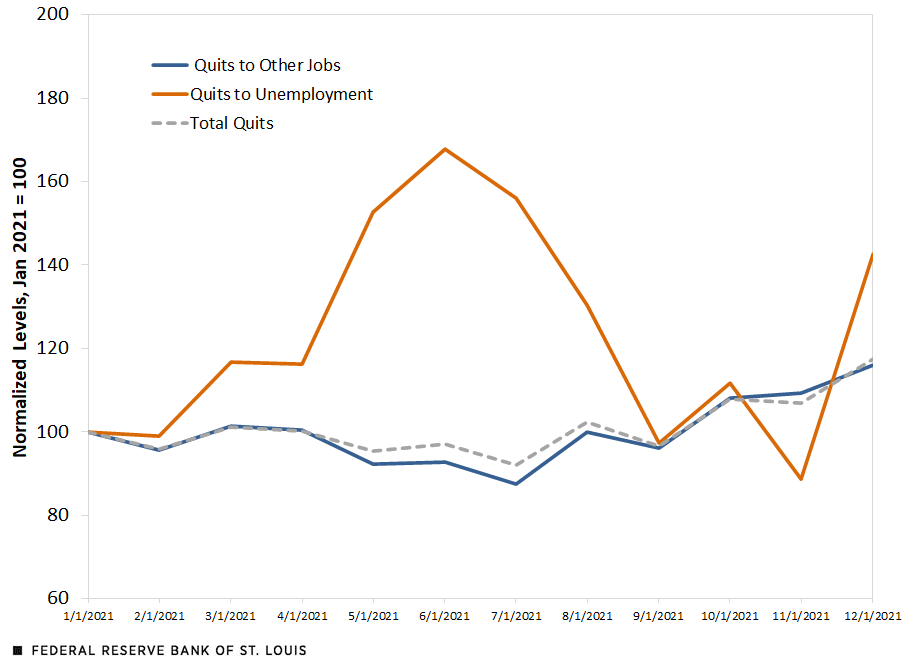OfTheCross
Veteran

The Great Resignation vs. the Great Reallocation Revisited
The type of jobs typically found in the service industry had the sharpest increase in people quitting for a new job in 2021, according to an analysis of job quits.
We show that, for all occupation groups, quits are mostly driven by job-to-job transitions—indicative of what we call the Great Reallocation—rather than quits to unemployment, as the term the Great Resignation may suggest. Meanwhile, job-to-job transitions, and thereby total quits, increased the most in the type of occupations that are typically found in the service sector.
Our focus is 2021, when quit rates climbed above pre-pandemic levels.1 We broke down occupations into four groups along two dimensions: whether an occupation is manual or cognitive and whether it is routine or nonroutine.2
Occupations are considered manual if they involve more physical activities and cognitive if they involve more mental tasks. Occupations are considered routine if the tasks involved can be accomplished by following a set of well-defined procedures and nonroutine if these tasks require more complex problem-solving and communication skills. Below are examples of occupations in each group:
- Nonroutine cognitive: managers, doctors, engineers, etc.
- Nonroutine manual: child care workers, janitors, food service workers, etc.
- Routine cognitive: cashiers, sales agents, postal service workers, etc.
- Routine manual: construction laborers, electricians, flight attendants, etc.
Quits for Nonroutine Cognitive Occupations

Quits for Nonroutine Manual Occupations

Quits for Routine Cognitive Occupations

Quits for Routine Manual Occupations
